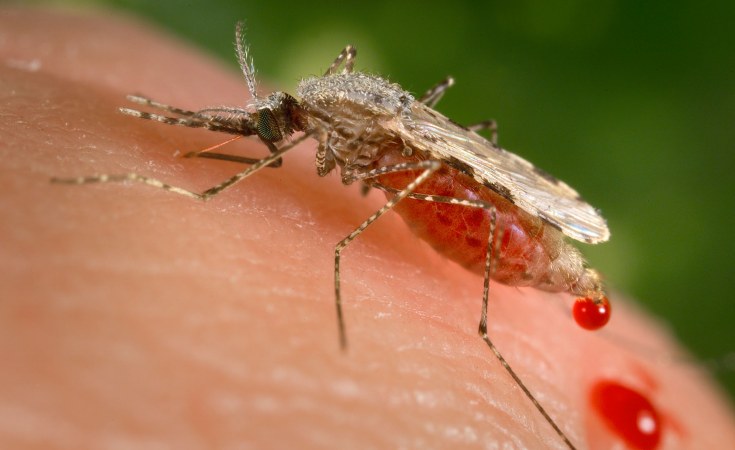Harare — Malaria is the world's most important and deadly tropical mosquito-borne parasitic disease, according to the United Nations, killing a child under five every 75 seconds, and making it an urgent public health priority for the world.
And Sub-Saharan Africa continues to carry the heaviest malaria burden, accounting for about 95% of all malaria cases and 96% of all deaths in 2020, the World Health Organization (WHO) says, adding that malaria is the number one killer of children in sub-Saharan Africa, causing the death of more than 260,000 children under age 5 every year.
Many of these deaths are preventable and treatable, but success in the fight against malaria is fragile and closely tied to sustained investment. In the past, there was a plateau in the funding of the global malaria response, but it's not enough.
In September 2022, the Global Fund to Fight Aids, Tuberculosis and Malaria announced at its seventh Replenishment Conference hosted in New York by U.S. President Joe Biden, that it raised a total of U.S.$14.25 billion, with more pledges expected in the near future. Although this is a huge stride that could see a reduction in cases and deaths, the investments still fall short of the Global Fund's U.S.$18 billion target for its next three-year funding cycle, putting at risk the aim of securing enough investment to save 20 million more lives from malaria, HIV and tuberculosis.
Today, Africa carries a disproportionate burden of the disease, but it was not always the case. History shows that two centuries ago, malaria was ravaging some countries in Europe at rates similar to those being experienced in Africa today. Quick fixes won't cut it.
There have been significant breakthroughs in malaria prevention and control, but the global response to the longtime threat of malaria took a hit when the novel coronavirus pandemic disrupted health services in many countries, leading to at least 69,000 more people dying in 2020 than in 2019.
Now, a cancer drug offers fresh hope against the number one killer of children in sub-Saharan Africa. The drug, undergoing clinical trials apparently has the potential to treat malaria, cure it, and stop the spread of the disease. The groundbreaking discovery made by researchers at the University of Cape Town (UCT), in partnership with numerous national and international organisations from the United States, Germany, and Spain, was released in October 2022.

According to the UCT findings, the results demonstrate that sapanisertib has the potential to prevent, treat, and prevent the spread of malaria by eliminating the human malaria parasite when it is in the liver.
Professor Kelly Chibale, who's senior lead author and founder and director of Drug Discovery and Development Centre (H3D) says the method used to discover sapanisertib known as drug repurposing or drug repositioning, shortens the process and is cheaper.
"Discovering and developing a new medicine is a lengthy and expensive process, often with low returns in terms of the number of drugs that finally make it to the market," Chibale said.
"In most cases the candidates, in this case sapanisertib, will have been through several stages of clinical development and will have well-known exposure and safety profiles in humans," he added.
Dr Lauren Arendse of the H3D, an integrated and interdisciplinary drug discovery research organisation, says there will be further research that will evaluate the potential of repurposing sapanisertib to treat malaria.
"It is a privilege to play a small part in a global shared vision to develop new drugs for malaria," said the first author, Dr Lauren Arends. "This study has enabled me to rapidly expand my networks and knowledge within the malaria field and has served as a catalyst for new ideas and collaborative research projects. As an early-career scientist working in drug discovery - which is multidisciplinary by nature - these partnerships are invaluable."
According to WHO, the best way to fight malaria is to prevent infection in the first place.
The specialized agency of the UN recommends that all people living in malaria transmission areas practise protection against malaria with the two common methods being the use of insecticide-treated mosquito nets and indoor spraying. While these are highly effective interventions, malaria is closely associated with poverty and underdevelopment. It occurs mostly in poor, tropical and subtropical areas of the world with Africa being the most affected due to a combination of factors such as very efficient mosquito (Anopheles gambiae complex) which is responsible for high transmission.

Climate change is also a major factor. The UN says it will increase the opportunities for malaria transmission in traditionally malarious areas, in areas the disease has been controlled, as well as in new areas which have been traditionally non-malarious. For instance, in dry climates, heavy rainfall can provide good breeding conditions for the mosquitoes.
Also, variations in climatic conditions like temperature, rainfall patterns, and humidity have a big impact on the lifespan of the mosquito, the development of malaria parasites in the mosquito, and ultimately the transmission of malaria.
"While the exact climate-related health risks and impacts have yet to be fully understood, climate change impacts malaria transmission, mainly due to extreme weather events. Over the long term, rising temperatures and increases in rainfall could spread the disease to previously malaria-free zones," says Roll Back Malaria (RBM), a partnership that was launched in 1998 by the WHO, UNICEF, UNDP and the World Bank, in an effort to provide a coordinated global response to the disease.
Without access to medicines, Africans are vulnerable to the continent's three major killer diseases, that is malaria, tuberculosis, and HIV/AIDS. This undoubtedly contributes to the poor health metrics of most countries in the region.
The African Union goal of reducing malaria incidence and mortality by 40% by 2020, a key milestone to eliminating malaria in Africa by 2030, was missed. However, the WHO has provided a Global technical strategy for malaria with the goal to aid and support national and regional initiatives aimed at eradicating and controlling malaria.


